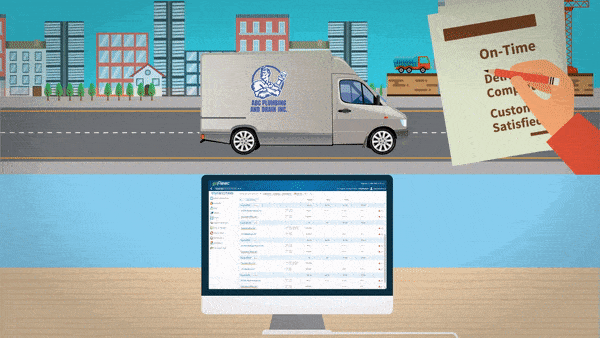Time Theft: How it’s Hurting Your Business
How is Time Theft Hurting Your Bottom Line?
Do you ever stop and think that some of your drivers are padding their hours? If you do, you could be right. According to the American Payroll Association, the average employee steals 4 hours every week!
Get Rid of Paper Timecards
Still using paper timecards? This takes up extra time for both drivers and your accounting department, as well as runs the risk of being inaccurate. Companies that lack automated timecards have up to an 8% error rate, according to the APA.
One of the biggest downfalls to paper timesheets are that not only do they allow for human error but they are very easy to fake (making it easy to commit time theft). Employees could be arriving on the job 15 minutes late or leaving 15 minutes early everyday yet writing down otherwise. 10 to 15 minutes added from time to time may not seem like much, but it adds up. Let’s say an employee adds on 12 minutes each day to his or her timesheet. If this employee is paid $14.00 an hour working 5 days a week that adds up to a $672.00 per year loss. Now imagine multiple employees doing this and/or some of those hours being paid out as working overtime.
If you allow your drivers to take your company vehicles home, you probably catch yourself wondering if they use them for personal activities or even worse, side jobs. Not only could they be wasting the gas you pay for, they could be using your business name to make money on the side.
If you have a smaller fleet, it’s likely you don’t have a dedicated fleet manager making it especially hard to keep an eye on everything going on while your drivers are out on the road.
Increase employee productivity
Fortunately, for smaller fleet administrators that take on multiple roles, our fleet management technology can help. Our solution will not only eliminate time card discrepancies and the need for paper time cards, it has also proven to increase employee productivity by 15% and reduce fuel costs by 18%.
Time theft is often overlooked because many companies do not have any technology in place to monitor whether employees arrive on the job site the time they are supposed to; they are also missing out on the ability to track hours and verify employees work the hours they claim they do.
With GoFleet’s solution, you will be able to verify employee hours, ensure they are arriving to work or job sites on time and give accurate arrival estimates to your customers. This will increase the productivity of your workers, save you money, and keep your customers happy and coming back to you for more business in the future.
Let our team help you save money, increase productivity and keep your customers happy.
1-888-998-1122 | [email protected]
Sources:
